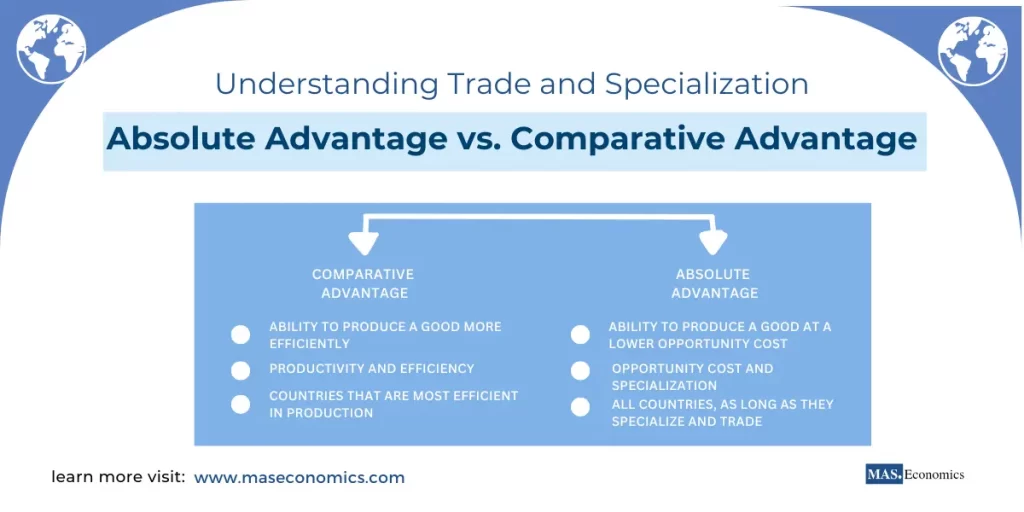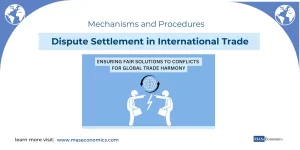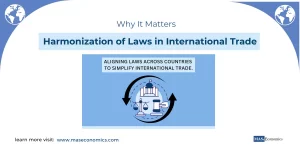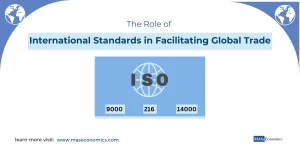Absolute advantage and comparative advantage are foundational concepts in international trade, forming the basis of why nations trade and how they benefit from specialization. Developed by Adam Smith and David Ricardo, respectively, these ideas reveal the importance of production efficiencies and trade-offs in shaping global economies. Absolute advantage explains why some countries produce certain goods more efficiently, while comparative advantage highlights the opportunity cost inherent in production decisions.
What is Absolute Advantage?
Absolute advantage is one of the cornerstone concepts in international trade theory, introduced by Adam Smith in The Wealth of Nations. It refers to a country’s ability to produce a good or service more efficiently than another nation. This efficiency may stem from factors such as superior technology, abundant natural resources, or a highly skilled labor force. In essence, if a country can produce more output per unit of input than another, it possesses an absolute advantage.
Core Principles of Absolute Advantage
Fundamentally, absolute advantage emphasizes the raw productivity of a nation. When a country can produce a commodity using fewer resources or at a faster rate than another, it naturally becomes the preferred producer of that commodity. This increased efficiency laid the groundwork for trade. Even if only one country holds an absolute advantage in producing a certain good, other nations can still benefit by specializing in areas where they face a less severe disadvantage.
To illustrate these principles in practice, consider a classic example comparing the production of wheat and cloth.
A Classic Example: Wheat and Cloth Production
| Country | Wheat Production per Hour | Cloth Production per Hour |
|---|---|---|
| Country A | 10 tons | 5 rolls |
| Country B | 5 tons | 10 rolls |

|
||
In this scenario, Country A is clearly more efficient in producing wheat, yielding 10 tons per hour compared to Country B’s 5 tons. Conversely, Country B excels in cloth production, producing 10 rolls per hour while Country A generates only 5 rolls. This example demonstrates that Country A holds an absolute advantage in wheat, whereas Country B has an absolute advantage in cloth.
Modern Applications and Global Trade Relevance
In today’s complex global economy, the principle of absolute advantage extends far beyond the simple wheat and cloth model. For instance, the United States frequently exhibits an absolute advantage in high-technology sectors. Its robust research and development infrastructure, combined with a culture of innovation, enables it to produce cutting-edge technologies more efficiently than many other nations.
Similarly, countries like Germany leverage advanced engineering and manufacturing techniques to achieve superior production efficiencies in industries such as automotive manufacturing. Additionally, nations endowed with abundant natural resources can capitalize on their strengths in sectors like mining or agriculture, thereby reducing production costs and boosting export potential.
These modern applications underscore how absolute advantage underpins global trade. By focusing on sectors where they are most efficient, countries can allocate resources optimally, produce a surplus of goods, and engage in mutually beneficial trade agreements. This strategic specialization not only drives economic growth but also enhances the resilience and competitiveness of global supply chains.
What is Comparative Advantage?
Comparative advantage, a concept introduced by David Ricardo, is a fundamental element in international trade theory that explains how countries can benefit from specialization—even when one nation is less efficient in producing every good. Unlike absolute advantage, which focuses solely on raw production efficiency, comparative advantage hinges on the concept of opportunity cost. In simple terms, opportunity cost is what a country sacrifices to produce one unit of a good instead of another.
Understanding Opportunity Cost
Every production decision involves trade-offs. Even if a country does not hold an absolute advantage in producing a particular good, it can still benefit by focusing on the product for which its opportunity cost is the lowest. Specializing in this way allows a nation to make the best use of its resources, ultimately leading to gains from trade.
A Classic Example: Opportunity Cost in Wheat and Cloth Production
| Country | Opportunity Cost of 1 Roll of Cloth | Opportunity Cost of 1 Ton of Wheat |
|---|---|---|
| Country A | 2 tons of wheat | 0.5 rolls of cloth |
| Country B | 0.5 tons of wheat | 2 rolls of cloth |

|
||
For Country A, producing one roll of cloth costs 2 tons of wheat, whereas for Country B, the cost is only 0.5 ton of wheat. Similarly, the opportunity cost of producing one ton of wheat is 0.5 roll of cloth in Country A and 2 rolls in Country B. Even if Country A is generally more productive in both goods, it makes sense for it to specialize in wheat, where its relative efficiency is higher, while Country B should specialize in cloth. When each country focuses on its lower opportunity cost, the total output increases, leading to mutually beneficial trade.
How Comparative Advantage Leads to Mutually Beneficial Trade
Specialization based on comparative advantage allows countries to produce more collectively than they would independently. By each nation focusing on the good that requires a lower sacrifice in terms of opportunity cost, both can trade to enjoy a higher overall quantity and variety of goods. This principle is at the heart of international trade; even when one country holds an absolute advantage in every area, trade is still beneficial if each country specializes according to its comparative advantage.
Example: Absolute and Comparative Advantage in Action
Consider the trade dynamics between the United States and China. The U.S. often demonstrates an absolute advantage in high-technology industries—its robust R&D infrastructure, innovative culture, and skilled workforce enable efficient production of cutting-edge technology. Conversely, China may not be as efficient in all sectors but benefits from a comparative advantage in labor-intensive manufacturing due to lower production costs and economies of scale.
For instance, while the U.S. leads in producing advanced software and high-tech components, China has a lower opportunity cost in mass-producing consumer electronics and textiles. As a result, the U.S. specializes in high-value technological innovation, and China focuses on sectors where its relative production cost is lower. This strategic specialization underpins their mutually beneficial trade relationship, driving economic growth and enhancing global supply chains.
Absolute vs. Comparative Advantage: A Comparative Analysis
While the earlier sections have examined absolute and comparative advantage individually, understanding how they differ—and how they complement one another—is crucial for grasping the full picture of international trade. Absolute advantage focuses on a nation’s raw production efficiency, whereas comparative advantage is concerned with the relative opportunity costs of producing different goods. Together, these concepts explain not only why countries specialize but also how mutually beneficial trade can occur, even when one country is more efficient in every area.
Side-by-Side Comparison
The table below summarizes the key differences between absolute and comparative advantage:
| Aspect | Absolute Advantage | Comparative Advantage |
|---|---|---|
| Definition | Ability to produce a good more efficiently (higher output per unit input). | Ability to produce a good at a lower opportunity cost. |
| Core Focus | Raw productivity and resource utilization. | Trade-offs in production; the cost of forgoing the next best alternative. |
| Specialization | Encourages specialization in sectors with superior production capacity. | Promotes specialization even if a country is less efficient overall, by focusing on relative efficiency. |
| Implications for Trade | Leads to surplus production and resource optimization. | Enables all countries to benefit from trade by exploiting differences in opportunity costs. |
| Real-World Impact | Drives sectors where technological innovation or resource abundance dominates. | Underpins trade relationships by allowing countries to benefit from their unique cost structures. |

|
||
Integrating Theory with Practice
In practical terms, a nation with an absolute advantage—such as the United States in high-technology industries—can produce goods at a higher overall efficiency. However, even if one country holds absolute superiority in every product, comparative advantage reveals that every nation benefits by specializing in goods where their relative opportunity costs are lowest. For example, while the U.S. leads in advanced technological production, China often achieves lower production costs in labor-intensive sectors, illustrating how strategic specialization drives mutually beneficial trade.
This comparative framework not only clarifies the theoretical distinctions but also reinforces the real-world application of these concepts. By aligning their production strategies according to both absolute and comparative advantages, countries can optimize resource allocation, increase global output, and forge robust trade partnerships that enhance economic resilience.
Conclusion
Absolute advantage and comparative advantage are fundamental concepts that explain why countries engage in trade and how they can benefit from specialization. Absolute advantage highlights efficiency, while comparative advantage reveals the power of focusing on opportunity cost to maximize gains for all participants. Together, these concepts form the basis for understanding international trade and the benefits that can arise from cooperation between nations.
By specializing in areas where they have a comparative advantage, countries can produce more, trade effectively, and improve their economic welfare. These ideas are as relevant today as they were in the times of Adam Smith and David Ricardo, guiding everything from trade negotiations to the structure of global supply chains.
FAQs:
What is the difference between absolute and comparative advantage?
Absolute advantage refers to a country’s ability to produce a good more efficiently than another country, using fewer resources or producing more output. Comparative advantage, on the other hand, focuses on the opportunity cost of production. A country has a comparative advantage if it can produce a good at a lower opportunity cost compared to other countries, even if it lacks absolute efficiency.
How does opportunity cost play a role in comparative advantage?
Opportunity cost is the value of the next best alternative forgone. In the context of comparative advantage, it measures what a country gives up to produce more of one good over another. A country should specialize in the good with the lowest opportunity cost, allowing it to trade efficiently and benefit from specialization.
Can countries benefit from trade even if one has an absolute advantage in all goods?
Yes. Even when one country is more efficient in producing every good, both nations gain if each specializes according to its comparative advantage. Specialization based on lower opportunity costs leads to increased overall production and mutual gains from trade.
What happens if countries try to produce everything themselves?
Attempting complete self-sufficiency leads to higher production costs and inefficiencies, as resources aren’t used where they yield the highest returns. In contrast, by trading according to their comparative advantage, countries achieve greater overall production and improve living standards.
Why is comparative advantage more significant than absolute advantage in modern trade?
Comparative advantage is more significant because it ensures that all countries, regardless of their overall productivity, can benefit from trade by specializing in what they do best at the lowest opportunity cost. Even countries without absolute efficiency can participate in global trade by focusing on their comparative advantages, making the global economy more inclusive and efficient.
Why are the classical trade theories of absolute and comparative advantage still important today?
The classical trade theories introduced by Adam Smith and David Ricardo continue to offer a fundamental framework for understanding how specialization and efficient resource allocation drive mutual gains from trade. Despite modern technological advancements and complex global supply chains, these theories remain essential in guiding trade negotiations, economic policies, and strategic decision-making in today’s global economy.
How do these principles influence specialization, trade policies, and global welfare?
By identifying and focusing on their competitive strengths—whether through absolute efficiency or by minimizing opportunity costs—countries can allocate resources more effectively. This targeted specialization leads to increased production efficiency, lower production costs, and ultimately higher global output. In turn, these efficiencies help shape trade policies that promote competitive industries and contribute to overall economic growth and improved living standards.
Thanks for reading! Share this with friends and spread the knowledge if you found it helpful.
Happy learning with MASEconomics



